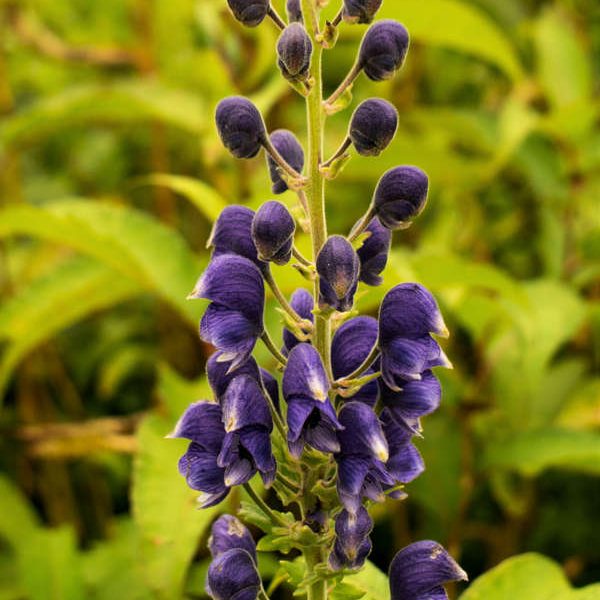Aconitum Balfourii
- Photography & Identification By
- Harendra Singh Mewari
Aconitum Balfourii is a herbaceous perennial plant with an erect, unbranched stem that can grow 90 – 150cm tall. The stem grows from a biennial tuberous root that produces a new tuber each year, and the old tuber dies after the plant blooms. It has a raceme flower structure with five bluish-purple-colored petal-like sepals and maple-like hierarchically lobed leaves. The uppermost petal forms a large erect hood-like or helmet-like shape. The plant has Upper leaves that are short-stalked, and lower leaves are long-stalked. Aconite Balfourii’s flowering time is from July to September.
The plant is harvest from the wild areas for medicinal use. You can find Aconite Balfourii in the upper subalpine region of the Himalayas on rocky slopes or meadows areas and with the Rhododendron group.
The whole plant is highly toxic. Simple skin contact can cause numbness in some people. It has been using in Ayurveda, Tibetian, and Unani medicinal practice since ancient times. It dries up Serous fluid. It is used medicinally in all types of pain and swelling caused by arthritis and disorders caused by micro-organisms and worms, amnesia, loss of body heat, leprosy, and paralysis.
- 🌿 Herb
- 🌸 Perennial
- Highly Toxic
- 📸 Valley Of Flowers
| Vernacular Name | English: Balfour’s Monkshood. Nepali: Gobari (West Nepal). Uttarakhand(India): Gobriya (Darma), Banwa (Garhwal). Hindi: Meetha Vish. |
| Synonyms | Aconitum Lethale, Aconitum Atrox, Caltha Codua. |
| Family | Ranunculaceae (Buttercup family). |
| Genus | Aconitum: Aconitum, also known as Aconite, Monkshood, Wolf’s-bane, Leopard’s bane, Mousebane, Women’s bane, Devil’s helmet, queen of poisons, or blue rocket, is a genus of over 250 species of flowering plants belonging to the family Ranunculaceae. Wikipedia. |
| Plant Height | 90cm to 1.5m |
| Color | Blueish Violet |
| Blooms | July to September |
| Habitat | Upper subalpine areas in open positions on rocky slopes, alpine meadows. |
| Distribution | Jammu & Kashmir, Himachal Pradesh, Uttarakhand, Sikkim, Nepal, Tibet. |
| Altitude | 3000-4000m |
| Tase & Potency | Arcid and sweet taste with heating potency. |
| Identification | Raceme flower structure with five bluish-purple petal-like sepals, the upper petal forms a large erect hood-like shape, maple-like hierarchically lobed leaves, short-stalked upper leaves, and long-stalked lower leaves. |
| Medicinal Properties | Root: Analgesic, Anti-inflammatory, Antirheumatic and Vermifuge. |
Want to Contribute? or Is flower misidentified? Click me!



